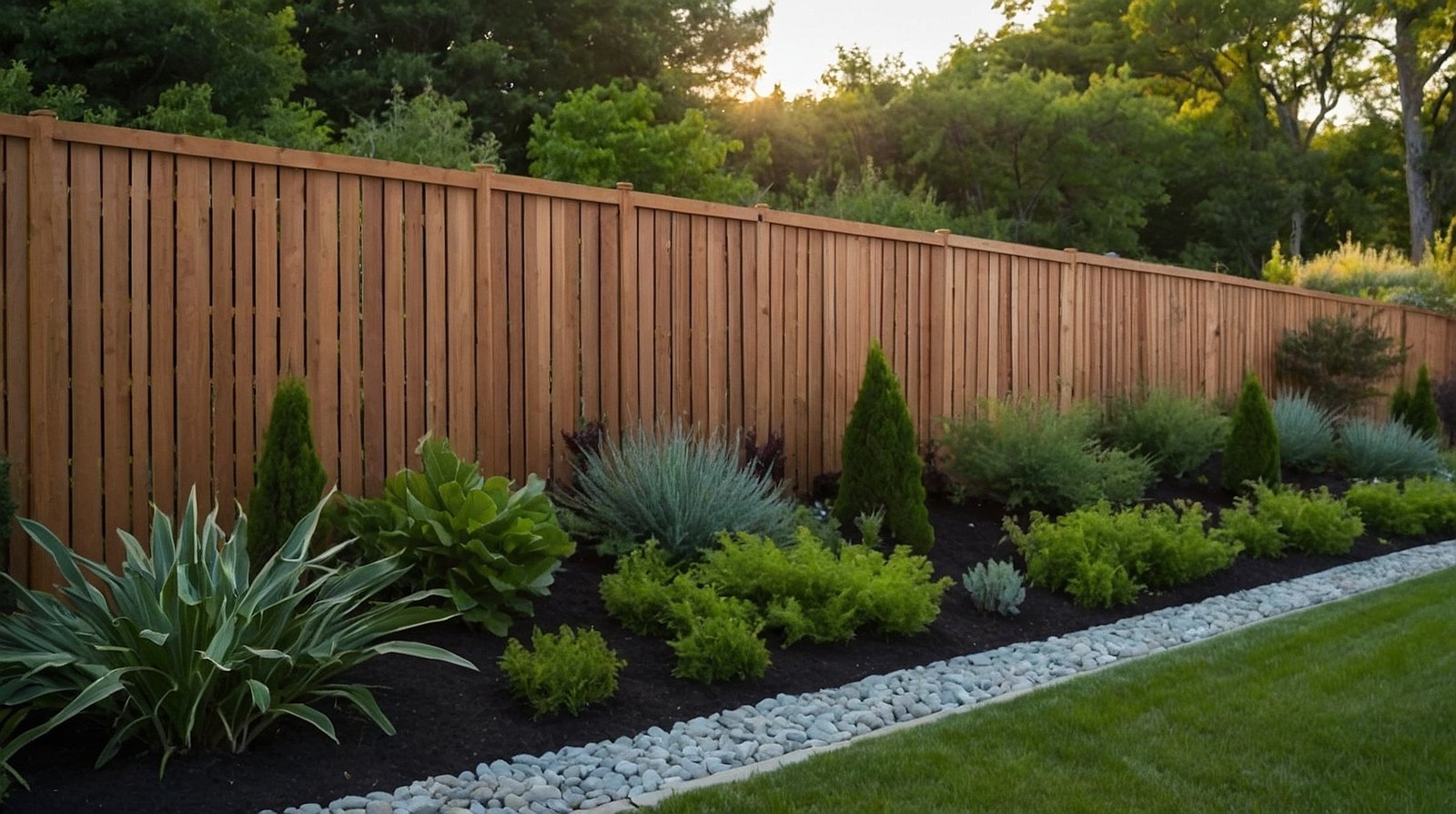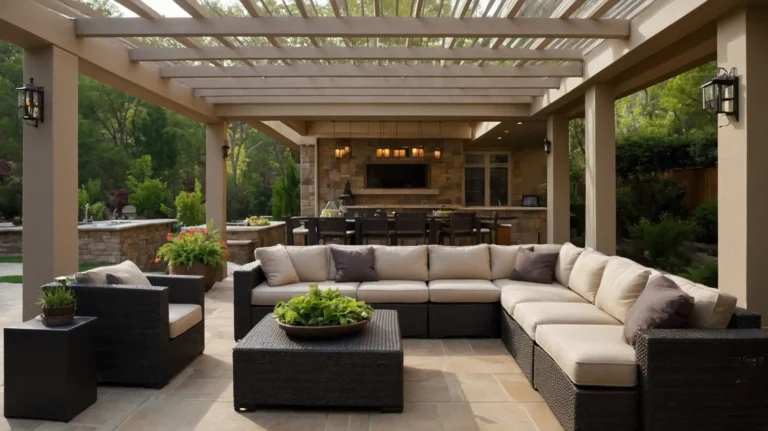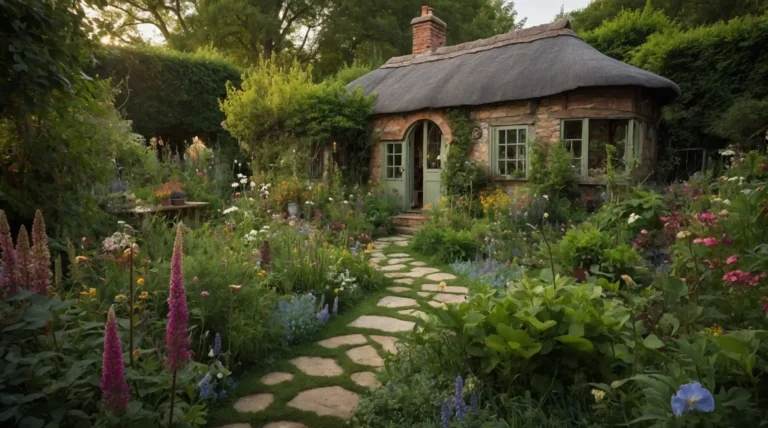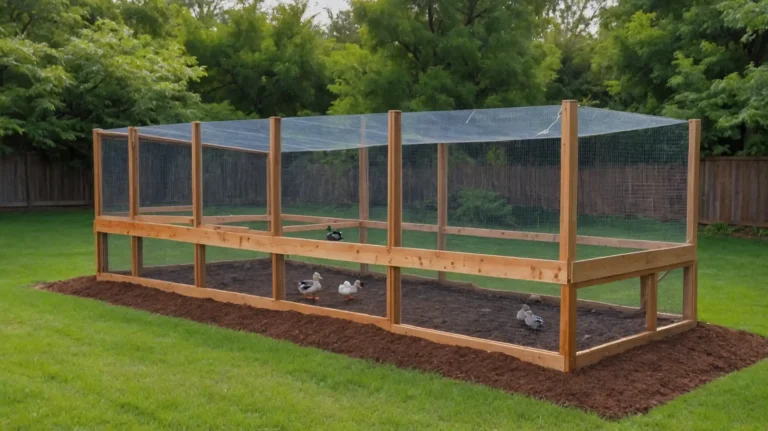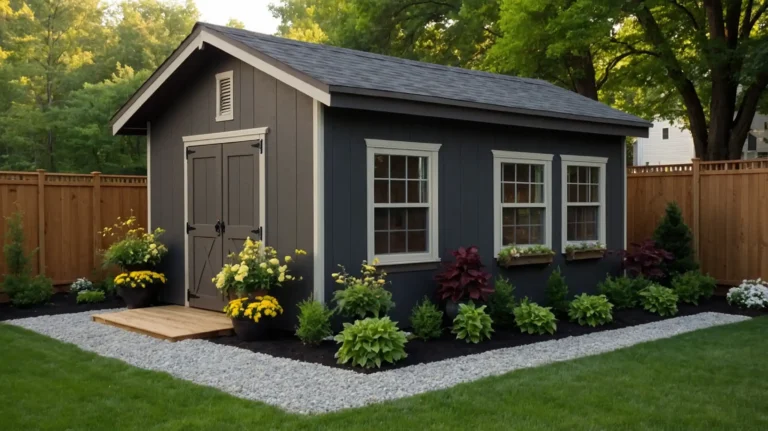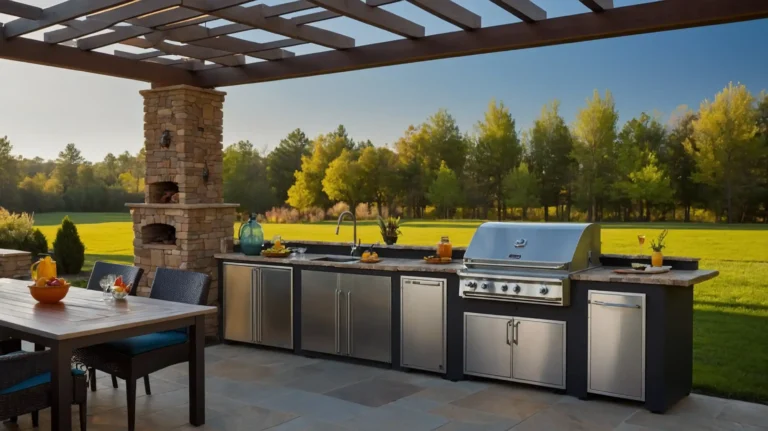27 Budget-Friendly Garden Fence Ideas That Don’t Sacrifice Style
Garden fences serve multiple purposes — defining boundaries, keeping pets and children safe, and enhancing your outdoor aesthetic.
However, traditional fencing options often come with hefty price tags that can quickly derail your landscaping budget.
Fortunately, you don’t need to spend a fortune to create beautiful, functional garden boundaries.
With a bit of creativity and some basic DIY skills, you can install attractive fencing that complements your outdoor space.
These 27 affordable garden fence ideas prove that protecting and enhancing your garden doesn’t require expensive materials or professional installation.
From repurposed items to clever natural solutions, you’ll find options perfect for any garden style and skill level.
1: Pallet Wood Fencing
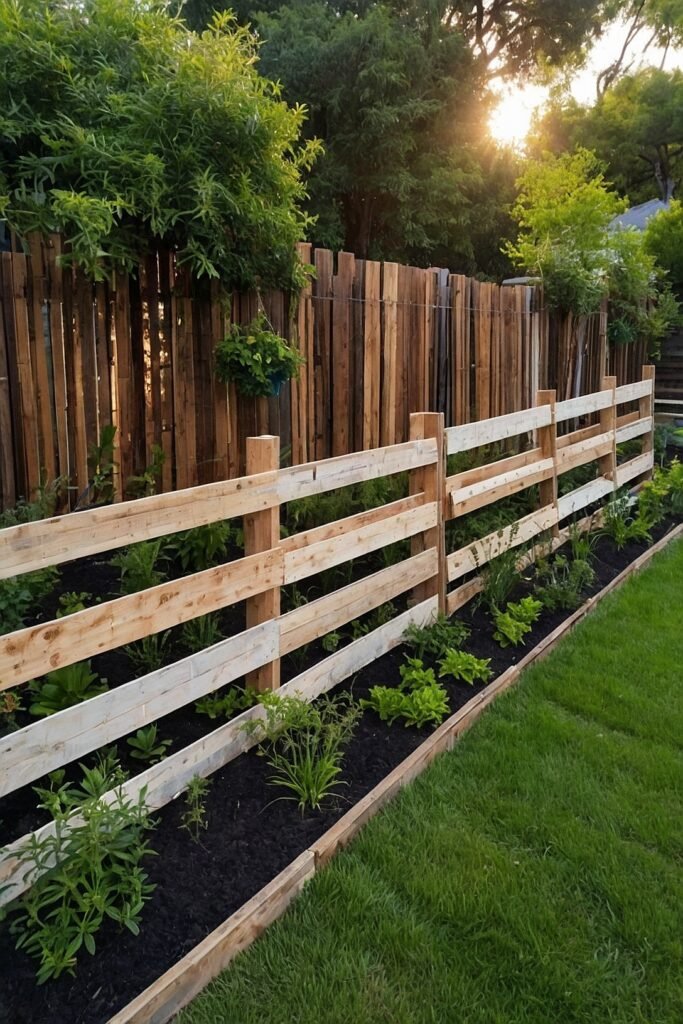
Transform free wooden pallets into charming rustic fencing with minimal tools and materials.
Disassemble pallets carefully, sand rough edges, and arrange the boards vertically or horizontally along your garden perimeter.
Apply a weatherproof stain or paint to extend the life of the wood and customize the look.
This approach recycles materials while creating a substantial barrier at virtually no cost.
2: Living Willow Fence
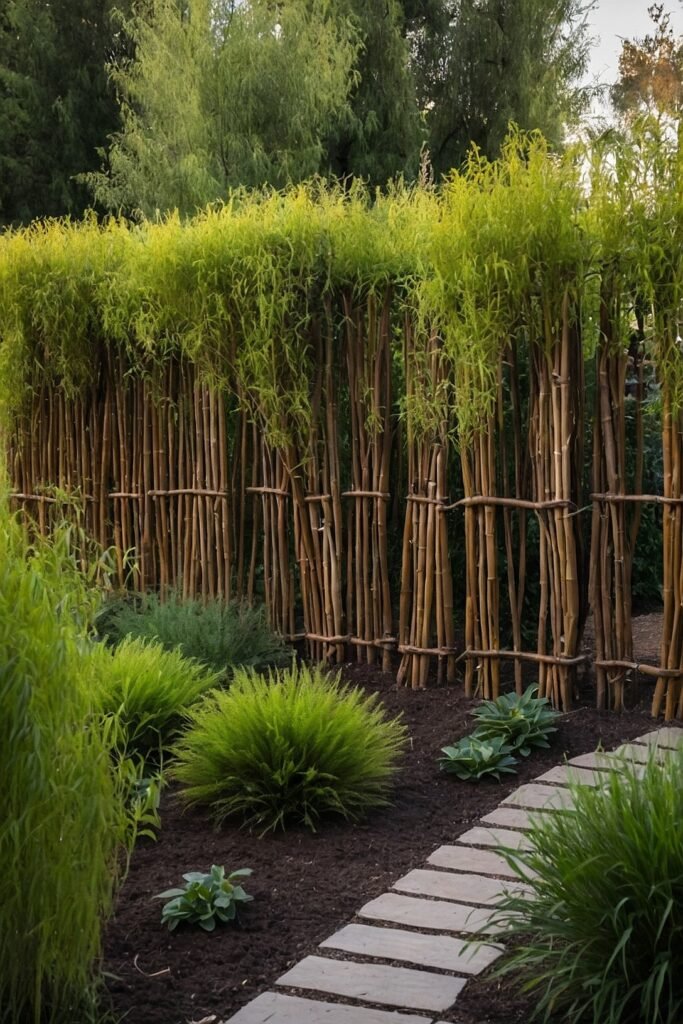
Grow a living fence by planting inexpensive willow cuttings that root easily and quickly develop into an enchanting natural barrier.
Insert foot-long willow rods into damp soil during late winter or early spring.
Weave new growth horizontally between vertical stems to create a lattice pattern.
This sustainable option becomes denser each year and costs a fraction of traditional fencing materials.
3: Bamboo Roll Screens
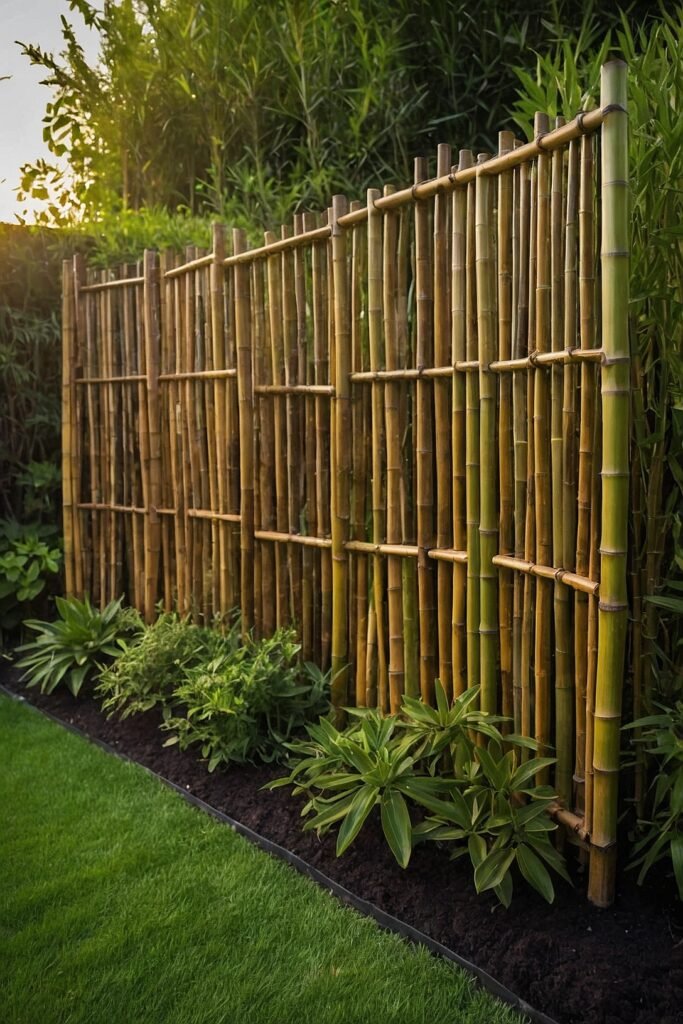
Create instant privacy with inexpensive bamboo roll fencing that installs in minutes with just a few basic tools. These lightweight, natural screens attach easily to existing posts or structures.
Their natural tan color blends beautifully with garden settings and weathers to an attractive silver-gray over time. For longer life, elevate the rolls slightly above soil level to prevent moisture damage.
4: Repurposed Wooden Doors
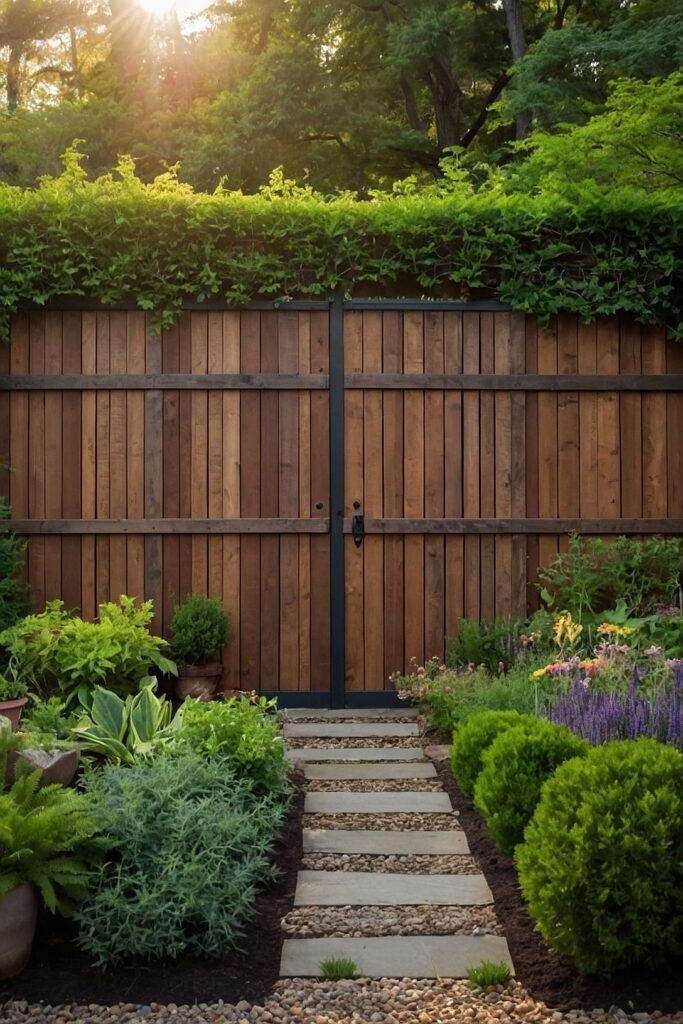
Hunt for discarded doors at salvage yards, thrift stores, or online marketplaces to create unique garden dividers with instant character.
Remove hardware, fill any holes, and apply exterior paint or sealant.
Arrange several doors side by side, attaching them with hinges for stability.
This conversation-starting fence option brings architectural interest to your garden while giving new life to discarded materials.
5: Woven Hazel Hurdles
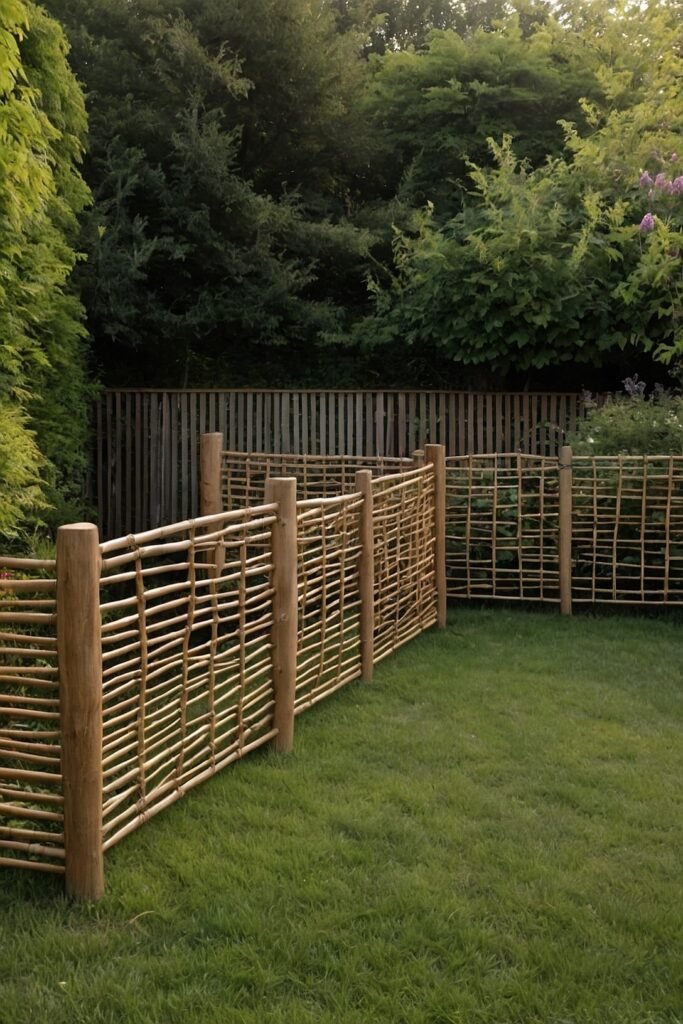
Craft traditional wattle fencing panels using flexible hazel branches woven between upright posts.
This ancient technique creates rustic barriers that complement cottage gardens and natural landscapes perfectly.
Harvest your own branches if available or purchase bundles of hazel rods inexpensively from garden centers.
The natural materials blend seamlessly with plantings while providing effective boundaries.
6: Corrugated Metal Panels
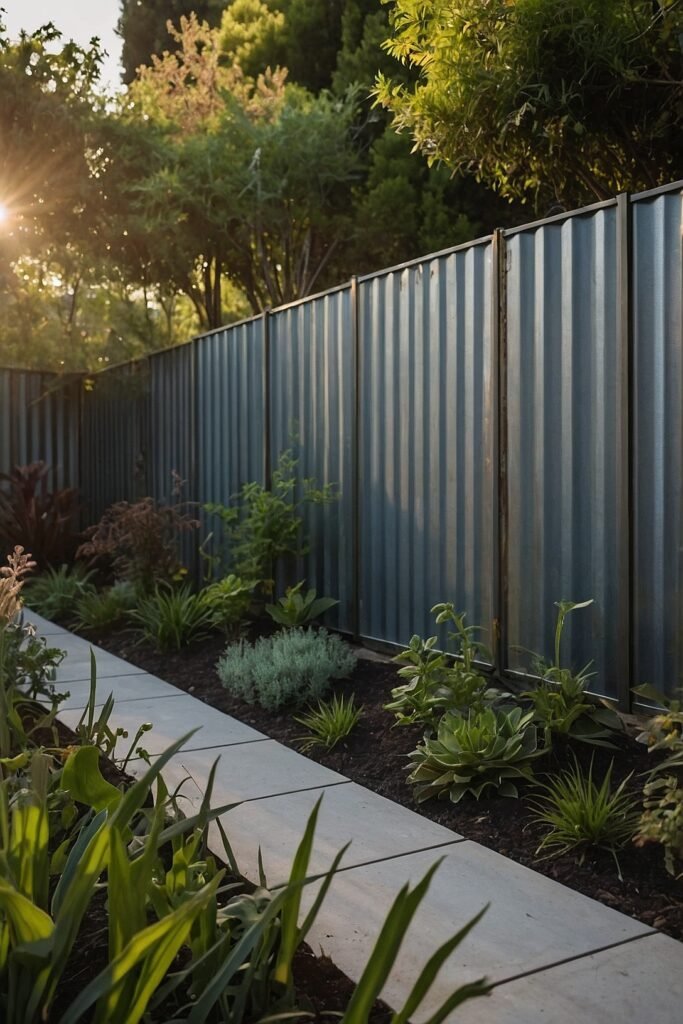
Incorporate industrial chic into your garden with corrugated metal roofing panels attached to simple wooden frames.
These durable, lightweight sheets create modern-looking barriers for minimal cost.
Allow them to develop a natural patina or paint them to match your garden color scheme.
The rippled texture catches light beautifully and provides interesting contrast against soft plantings.
7: Stone Gabion Walls
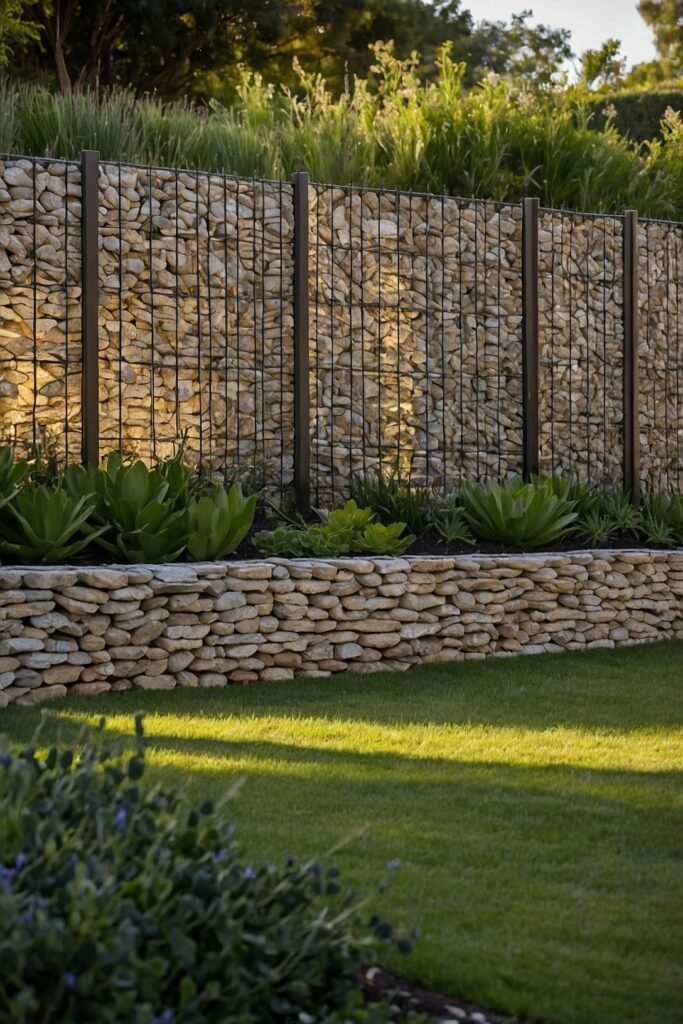
Create sturdy, drainage-friendly boundaries by filling wire cages with collected stones, broken concrete, or other free materials.
These permeable structures allow air circulation while blocking views and defining spaces.
Build to any height depending on your needs and available materials.
The modular nature allows for gradual construction as you gather suitable fill materials, spreading the minimal cost over time.
8: Recycled Bottle Fence
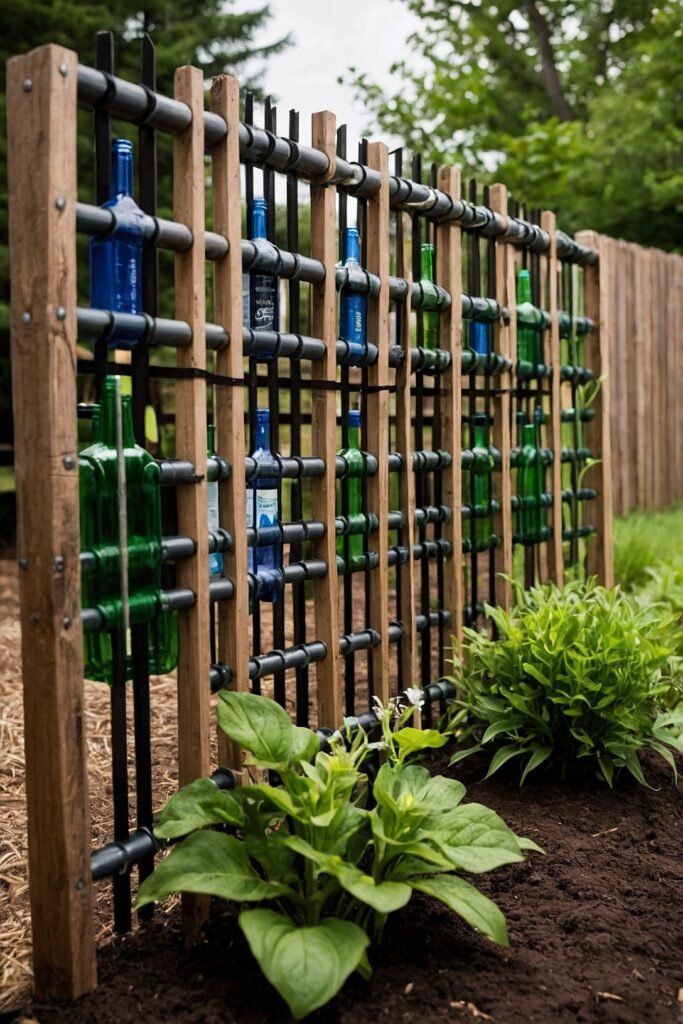
Transform discarded glass bottles into a magical light-catching fence by threading them onto rebar rods between wooden posts.
Choose bottles in complementary colors or create patterns for artistic effect.
The sunlight streaming through colored glass creates beautiful patterns on nearby surfaces.
This conversation-starting boundary costs almost nothing while diverting materials from landfills.
9: Split Bamboo Fencing
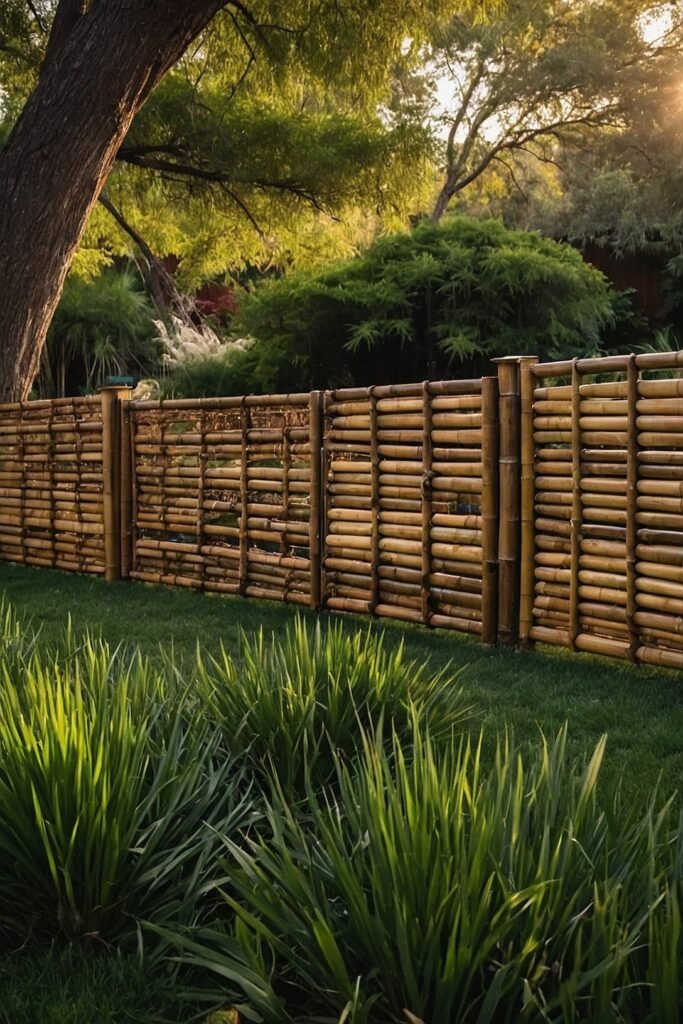
Install economical split bamboo rollout fencing for a tropical aesthetic that provides excellent privacy.
These tightly bound panels create solid-looking barriers without the weight or cost of solid materials.
Attach to existing posts or install with bamboo poles for an integrated look.
The material weathers gracefully and typically costs significantly less than traditional wooden fence panels.
10: Cattle Panel Arches
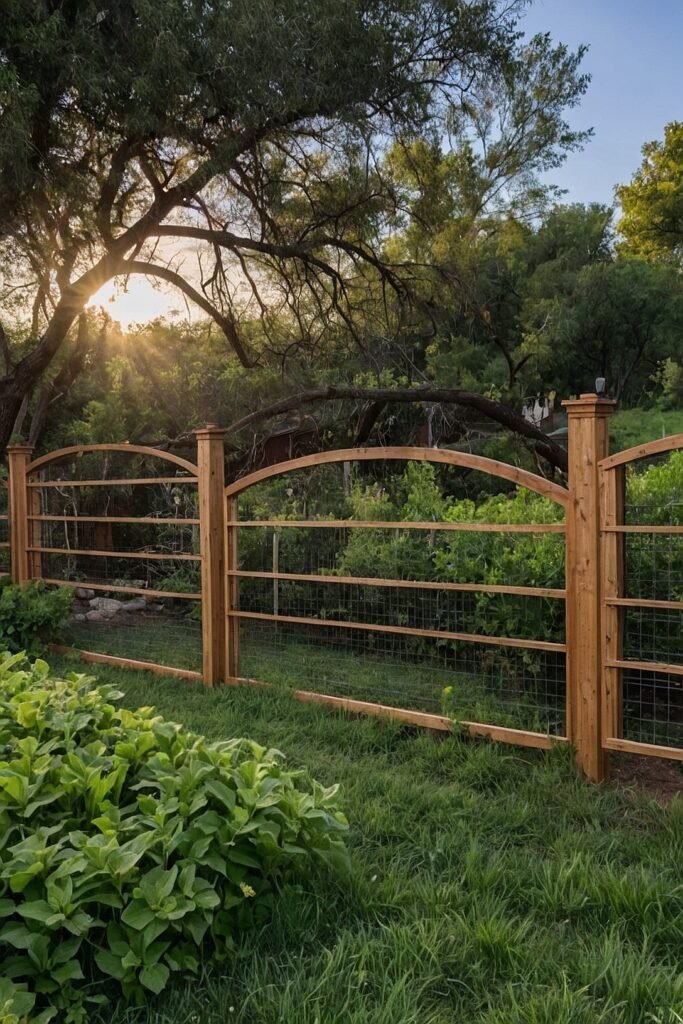
Bend inexpensive galvanized cattle panels into graceful arches that support climbing plants while defining garden rooms.
These sturdy grid panels create architectural structure instantly, even before plants mature.
Train vines, roses, or edible crops like beans and cucumbers to grow up and over the panels.
This dual-purpose solution provides both boundary definition and valuable growing space vertically.
11: Branch Wattle Weaving
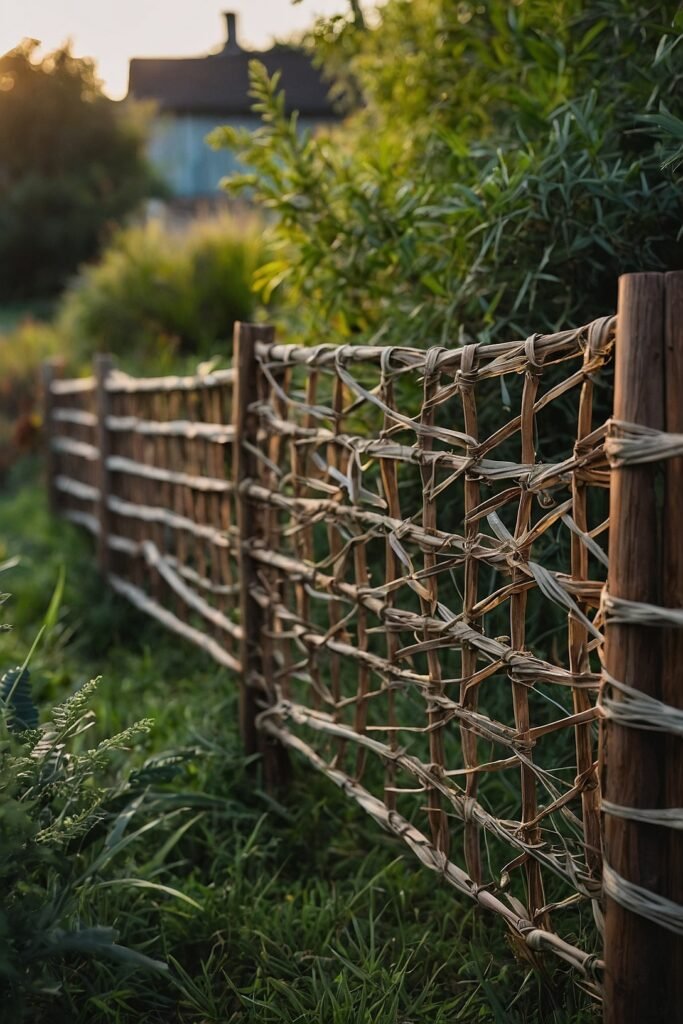
Collect fallen branches after storms or pruning to weave between simple stakes for zero-cost natural fencing.
This traditional technique creates attractive rustic barriers from materials you’d otherwise discard.
Vary the density of your weaving depending on how much privacy you need.
The irregular patterns and natural colors integrate beautifully into cottage garden and woodland settings.
12: Fabric Sail Borders
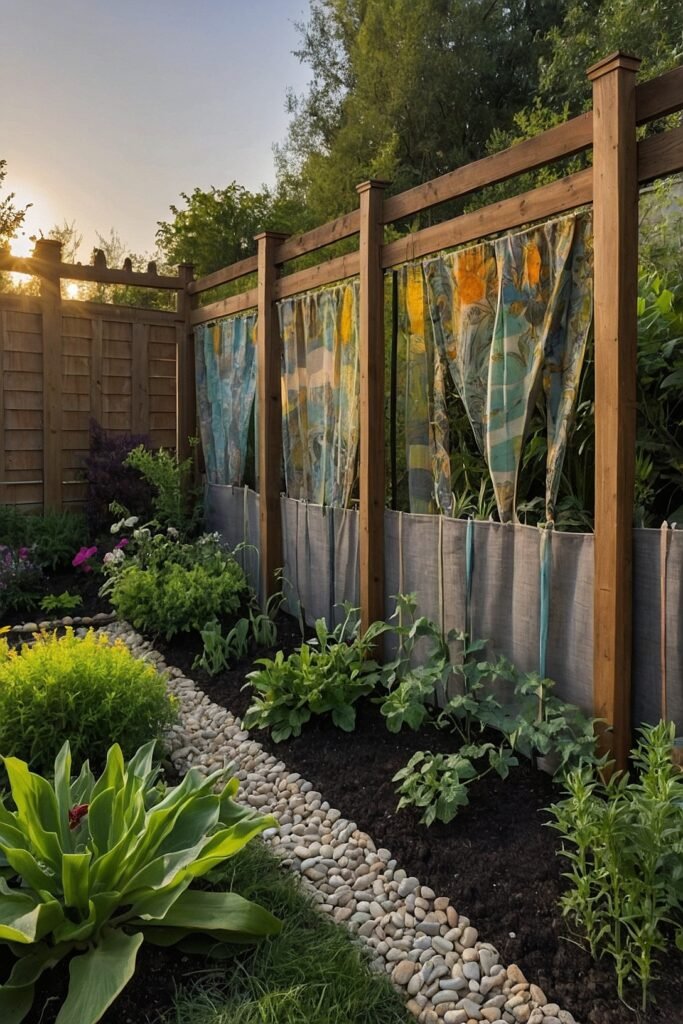
Create airy, colorful boundaries using inexpensive outdoor fabric stretched between simple posts.
These sail-like dividers add vertical interest and gentle movement to garden spaces.
Choose weather-resistant fabrics in colors that complement your plantings.
The lightweight nature of this solution makes it perfect for renters or those wanting seasonal flexibility in their garden layout.
13: Rope and Post Design
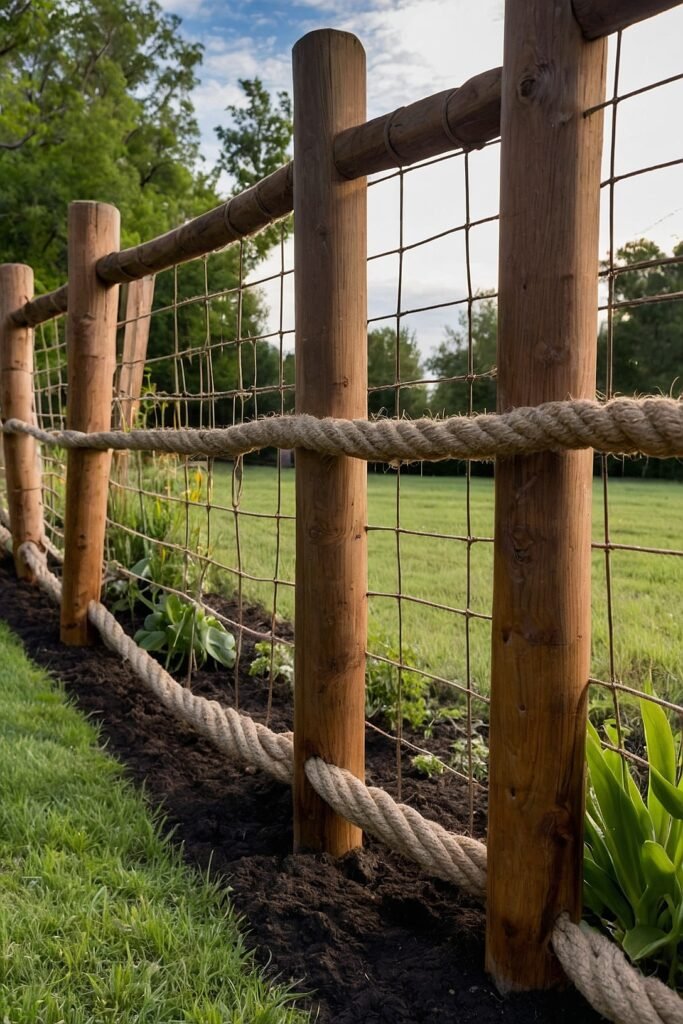
Define spaces elegantly with nautical-inspired boundaries using sturdy posts connected by thick rope threaded through drilled holes.
This minimalist approach suggests boundaries without creating solid barriers.
Use three to five horizontal rope lines depending on your desired level of definition.
The simple materials create a clean, contemporary look that works especially well in coastal or contemporary garden designs.
14: Upcycled Window Frames
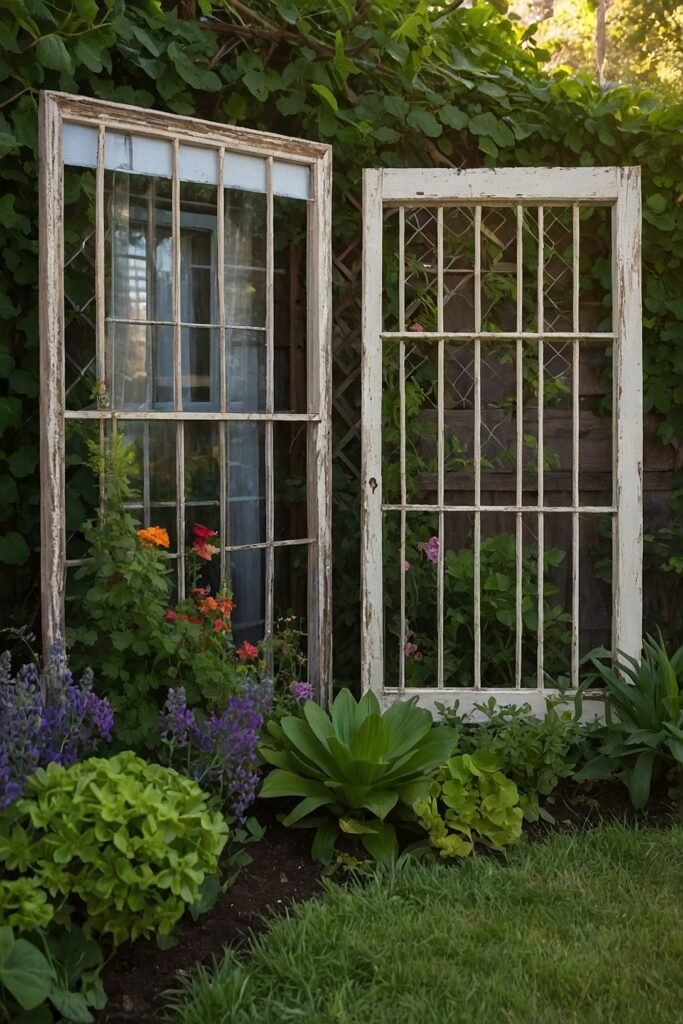
Transform discarded window frames into charming garden dividers by connecting several frames side by side.
Leave some openings glass-free for climbing plants, and keep others glazed for fascinating reflections.
Paint all frames a cohesive color or celebrate their differences with multiple complementary hues.
This architectural salvage approach costs little while adding instant character to your garden spaces.
15: Woven Willow Panels
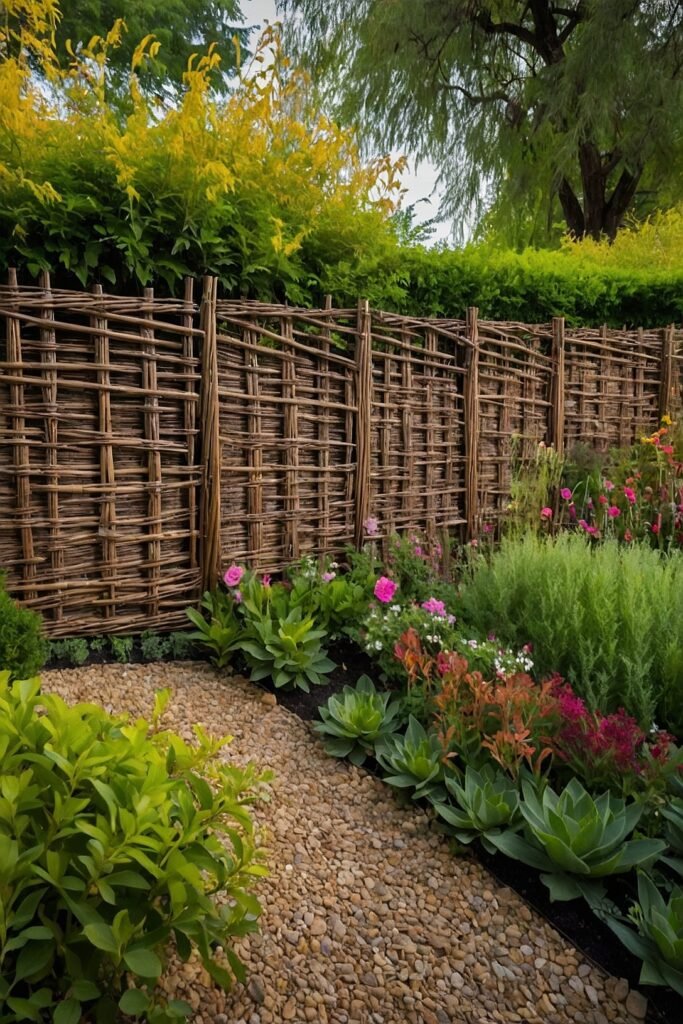
Purchase inexpensive willow screening or weave your own panels using harvested willow rods for natural, biodegradable fencing that develops character as it weathers.
The flexible material creates beautiful curved sections when desired.
The tight weave provides good privacy while allowing air circulation. The warm brown color complements plantings beautifully and gradually silvers with age.
16: Painted Picket Sections
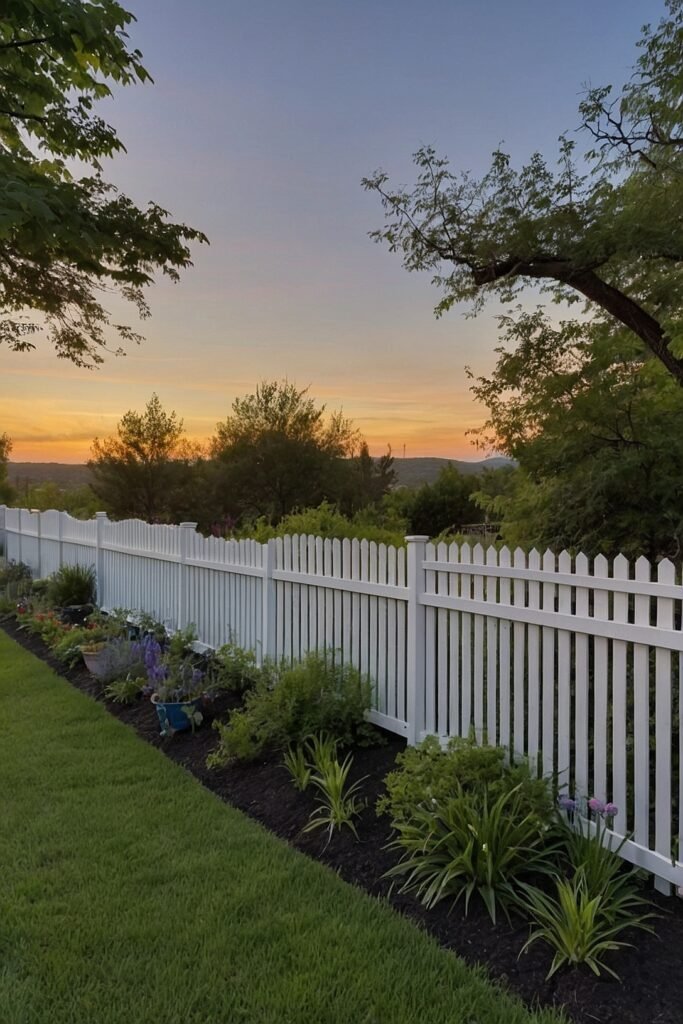
Construct simple picket sections using budget lumber, then transform them with colorful paint treatments that make the economical materials look intentionally playful.
Create ombré effects or alternate colors for visual interest.
Keep construction basic with widely spaced pickets to minimize material costs.
The decorative painting elevates the simple structure, creating fencing that looks deliberately artistic rather than merely economical.
17: Succulent Living Wall
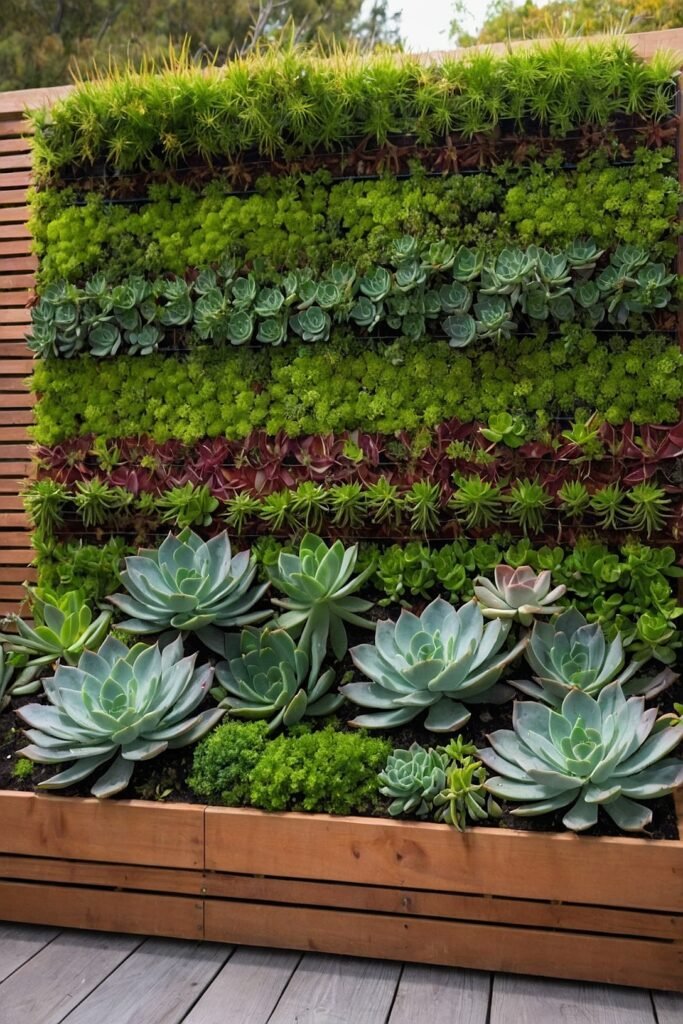
Build shallow frames filled with soil and planted with hardy, drought-resistant succulents to form living fence panels that grow more beautiful over time.
Use inexpensive construction materials for the frames.
The slow-growing plants require minimal care while creating stunning textural displays.
This living boundary improves with age as plants mature and spread to completely cover the supporting structure.
18: Recycled Pallet Chevron Pattern
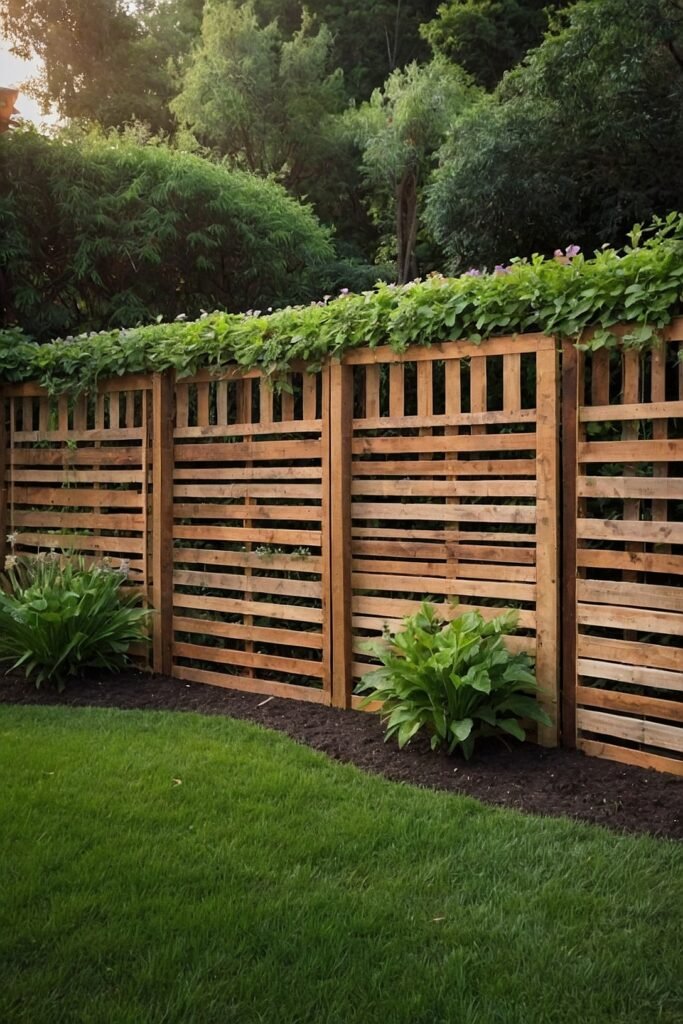
Disassemble free wooden pallets and rearrange the boards in attractive chevron patterns to create distinctive fence panels with minimal material cost.
The diagonal design adds visual interest without additional materials.
The zig-zag arrangement provides inherent strength while looking more sophisticated than straight layouts.
Seal with exterior stain to protect the wood and enhance its natural grain patterns.
19: Lattice Panel Screens
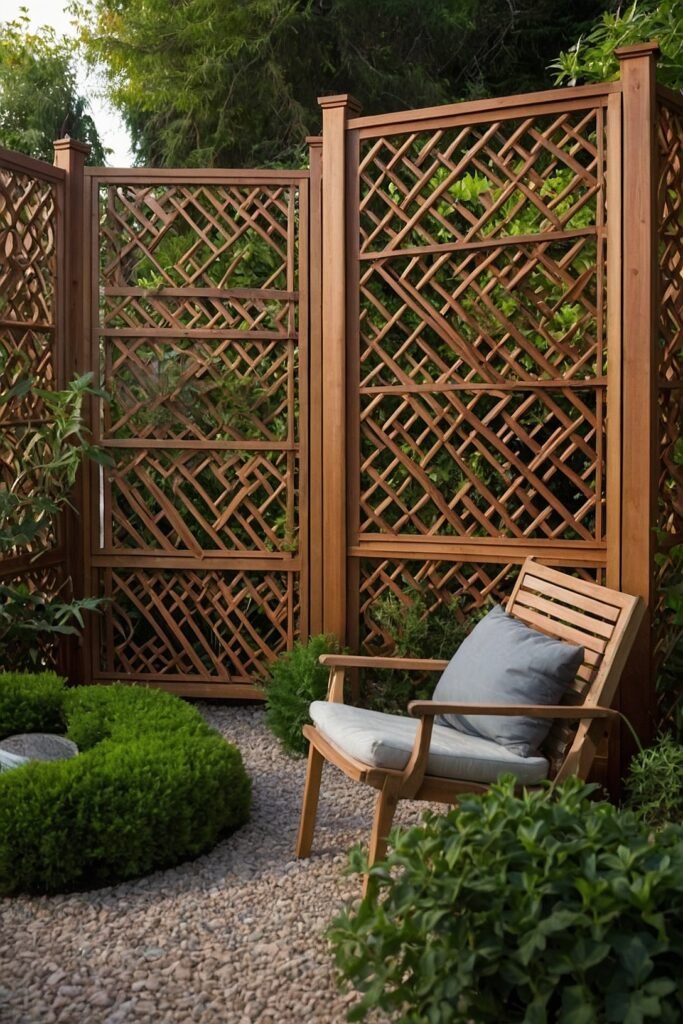
Install inexpensive wooden lattice panels between simple posts for immediate privacy that still allows light and air circulation.
These ready-made panels create instant structure for a fraction of solid fencing costs.
Train climbing plants to grow up and through the openings for additional screening.
The lightweight panels install easily with minimal tools, making this a perfect weekend project for beginners.
20: Sunflower Living Barrier
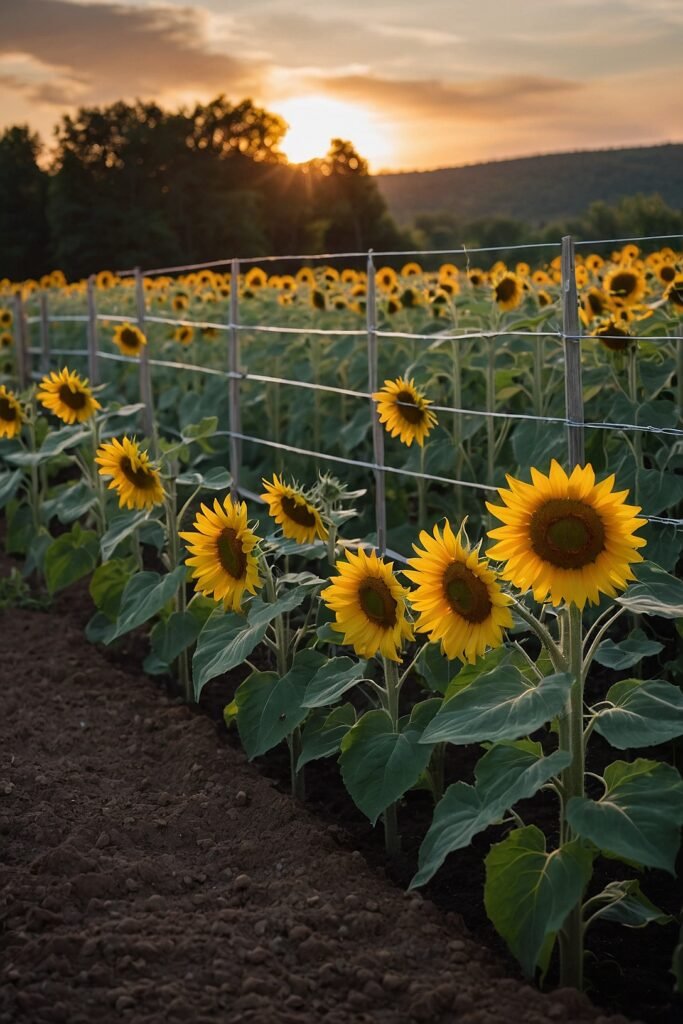
Plant mammoth sunflower varieties in close rows to create seasonal living fences that cost only the price of seed packets.
These impressive plants grow quickly, forming dense barriers up to 12 feet tall.
The cheerful flowers attract beneficial wildlife while providing summer privacy.
Save seeds at season’s end for free fencing in subsequent years, making this truly the most economical option available.
21: Hogwire Panel Framing
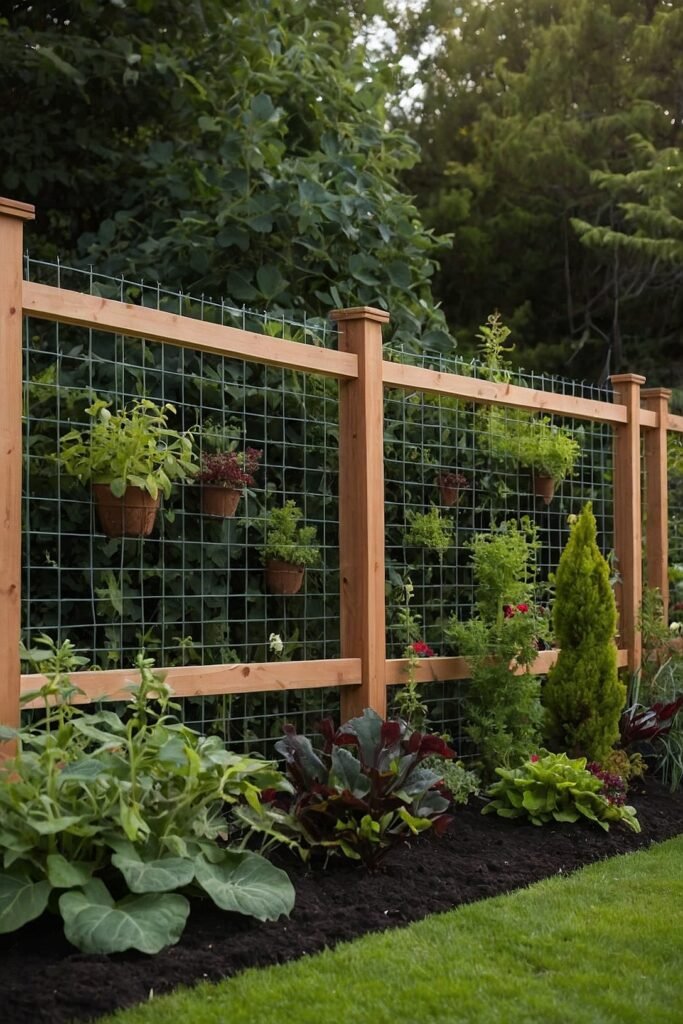
Mount inexpensive hogwire or cattle panels within simple wooden frames for clean-lined, contemporary fencing that costs a fraction of commercial alternatives.
The galvanized wire provides decades of service without maintenance.
The open grid pattern maintains views and airflow while clearly defining boundaries.
These panels work beautifully as supportive structures for climbing plants or as minimalist dividers in their own right.
22: Stacked Log Sections
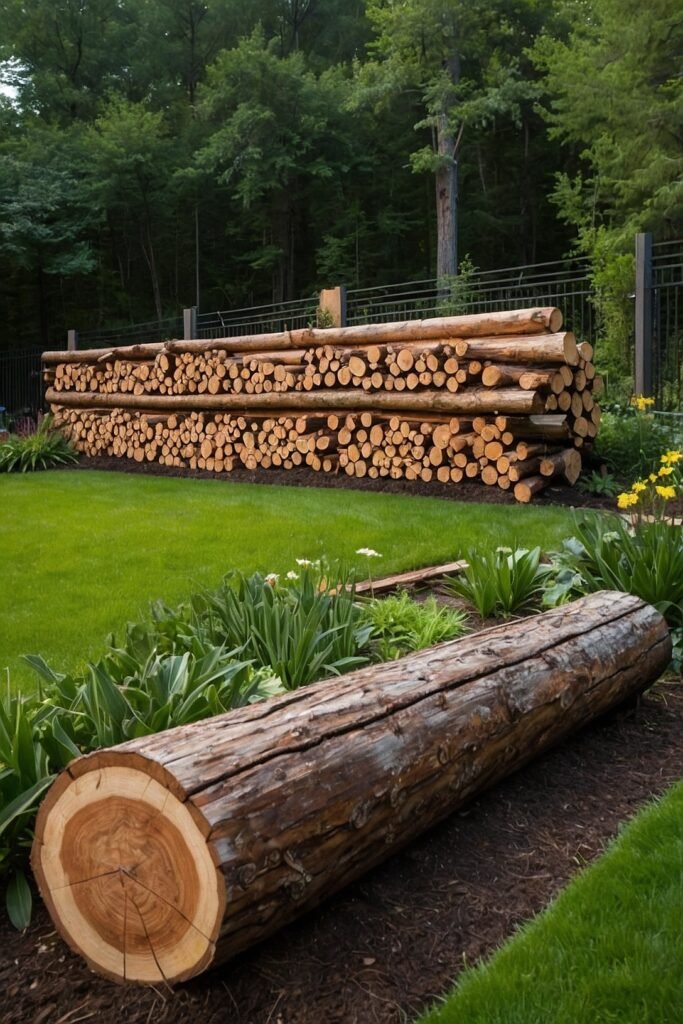
Create rustic boundaries by stacking short log sections between simple vertical posts. This pioneer-inspired technique uses tree trimmings or fallen wood that might otherwise become firewood.
The horizontal log placement creates interesting shadow patterns throughout the day. This approach costs nothing if you have access to wood, requiring only the time to cut sections to similar lengths.
23: Reed Screening Rolls
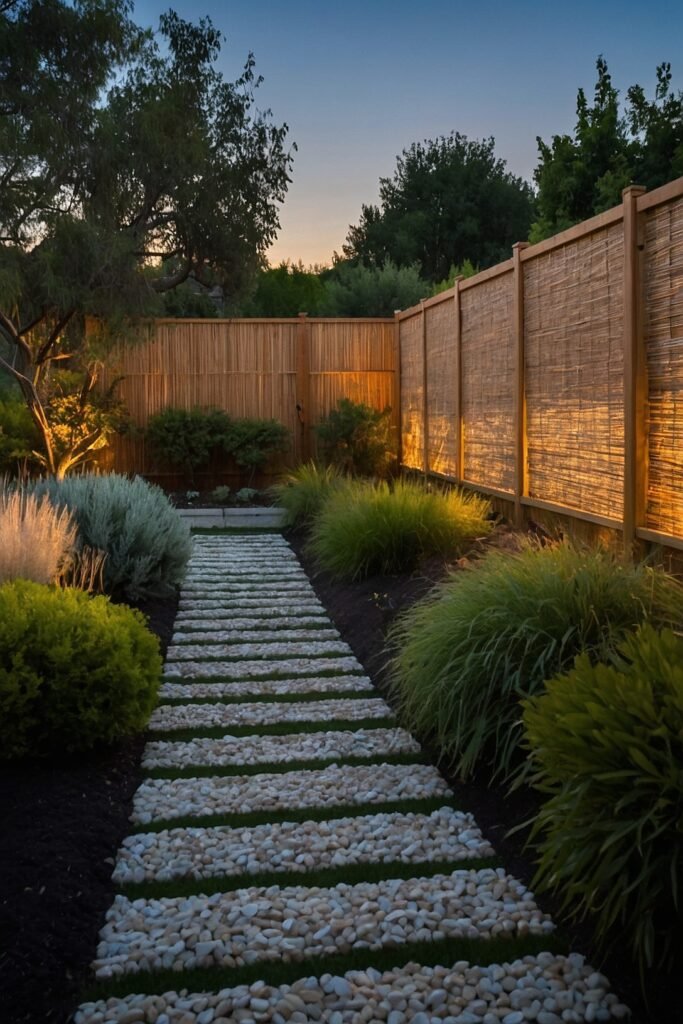
Install inexpensive natural reed screening rolls for instant privacy with organic texture and warm coloration.
These lightweight materials attach easily to existing structures or simple post systems.
The tightly bound reeds create effective visual barriers while allowing air movement.
The natural materials complement any garden style and weather to an attractive silver-gray over several seasons.
24: DIY Concrete Block Planters
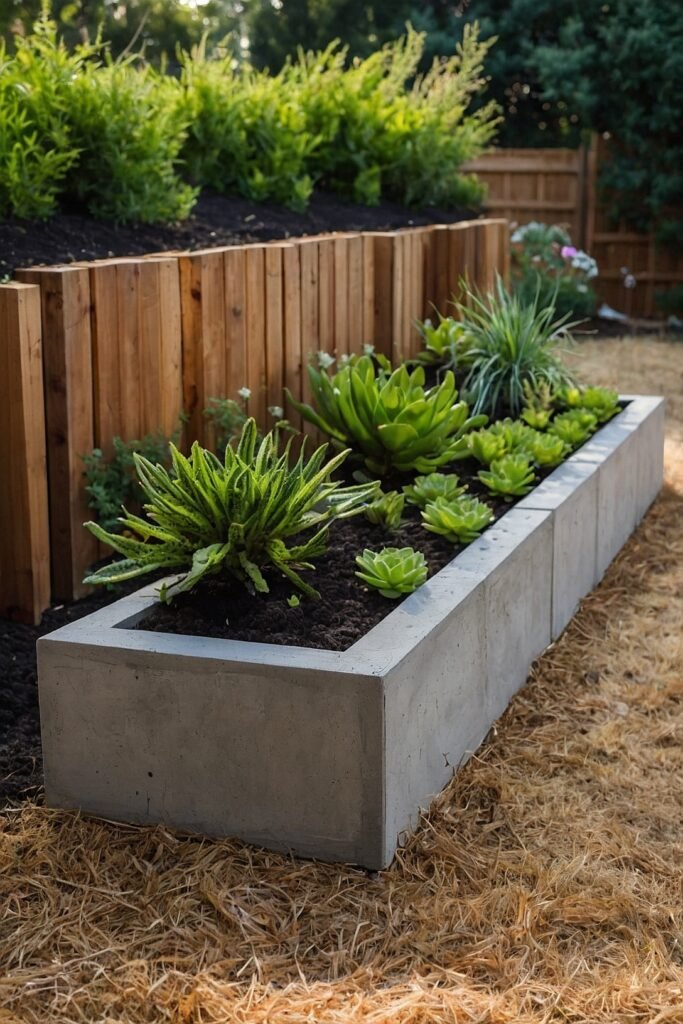
Construct sturdy boundaries using inexpensive concrete blocks arranged in alternating patterns with openings planted with colorful flowers or cascading herbs.
This structural approach doubles as a vertical growing space.
Paint blocks in complementary colors or leave them natural for an industrial look.
The modular system allows for easy reconfiguration and expansion as your needs or garden design evolves.
25: Vintage Tool Fence Display
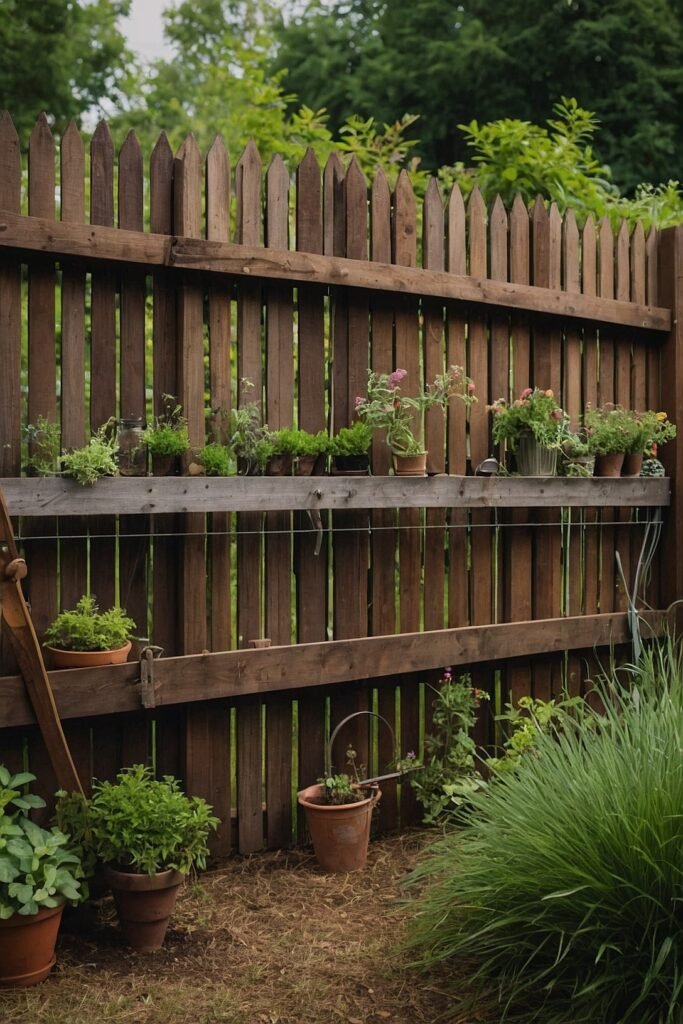
Mount collected vintage garden tools on simple wooden panels to create functional art that serves as garden dividers.
Source old tools from thrift stores, yard sales, and online marketplaces inexpensively.
Arrange rakes, hoes, and other implements in attractive patterns before securing them to your backing boards.
This conversation-starting boundary celebrates garden heritage while repurposing items that might otherwise be discarded.
26: Woven Rope Screens

Create semi-transparent boundaries by weaving colorful nylon rope between simple wooden frames.
This nautical-inspired approach costs significantly less than conventional fencing while adding playful texture.
Vary your weaving pattern to control privacy levels and visual interest.
The weather-resistant synthetic rope maintains its appearance for years while adding unexpected color to your garden design.
27: Staggered Pallet Planter Wall
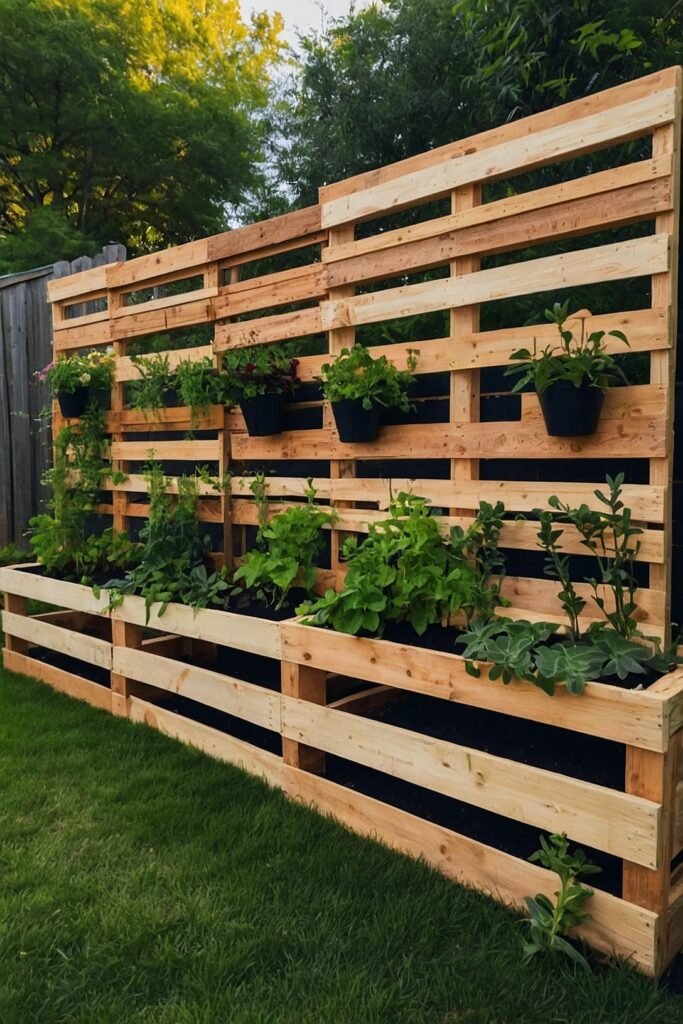
Construct a living wall boundary by stacking pallets in a staggered arrangement, filling the openings with soil and plants.
This vertical garden solution creates privacy while maximizing growing space.
Plant drought-tolerant perennials and cascading varieties for minimal maintenance.
The wood naturally weathers to an attractive silver-gray, or you can stain it to complement your garden color scheme.
Conclusion
With creativity and resourcefulness, you can construct beautiful garden boundaries without breaking your budget.
Experiment with these affordable ideas to find the perfect solution that provides privacy, defines your space, and enhances your garden’s beauty.

